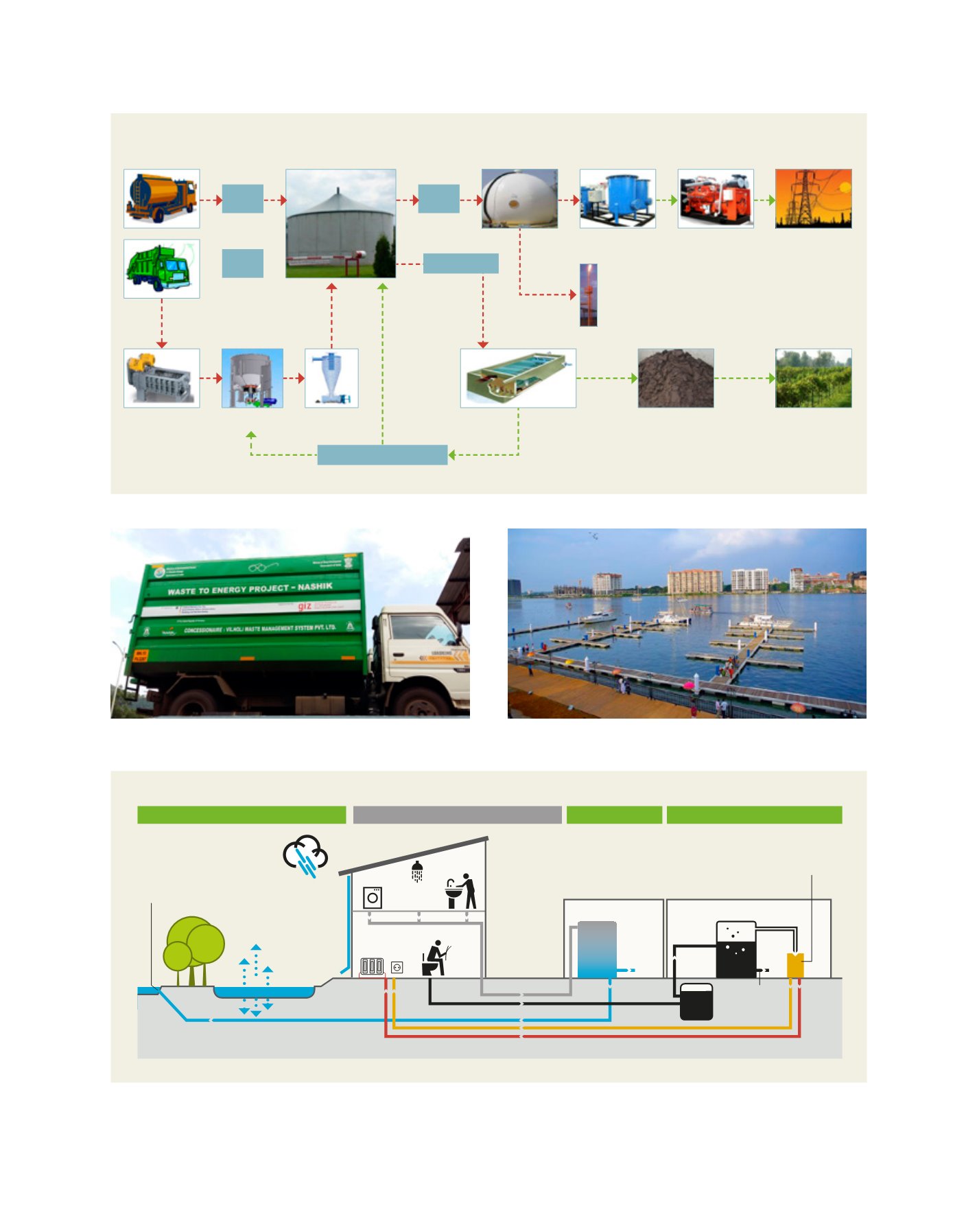

[
] 46
A B
et ter
W
or ld
Water from vacuum toilets is treated together with organic waste, for instance organic oil from restaurants, to produce biogas and fertiliser. Greywater is treated
separately and used for urban greening and to improve the quality of recreational areas. A range of urban agencies need to cooperate to make this innovation
possible, including the urban utility for wastewater, the city’s stakeholder responsible for organic waste, urban planners and the urban department of the environment
Broader conversations on matter flux, as viewed across system borders, has been put into practice due to the Waste to Energy illustration
Vehicle transporting organic solid waste and faecal sludge to the biogas
plant that forms a central component of the Nashik Waste to Energy project
The Hamburg Water Cycle addresses the future needs of a city by being reuse
oriented and resource efficient – an inspiration for the development of a
sustainable sanitation concept for the city of Cochin, India (Beerman, 2017)
23
Fig. 7: Iconography used in describing the Waste to Energy project in Nashik, India
Fig. 8: The Hamburg Water cycle addresses several streams
Source: GIZ Factsheet http://www.urbansanitation.org/e31169/e58117/
Image: SFD Promotion Initiative
Image: GIZ
Rainwater
Housing
Greywater
Blackwater
Digester
Gas flaring unit (back
up during emergency)
Scrubbing
CHP
Power to NMC
Manure for agricultural use
Sand removal
Shredding
Pulper
Treated Wastewater
Faecal
sludge
Solid
waste
Gas
Digestrate
Run-off
Evaporation
Seepage
Purified greywater
Rainwater
Heating
Heating
Power
Power
Greywater
Greywater
Greywater treatment
Digestate
Vacuum
station
Biogas
Domestic
water
Blackwater recycling
Cogeneration
Blackwater
Source: Hamburg Wasser
















